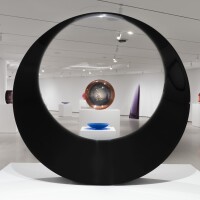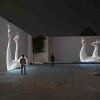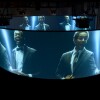Off Catalina, An Underwater Installation Aims to Raise Awareness of Our Dying Oceans
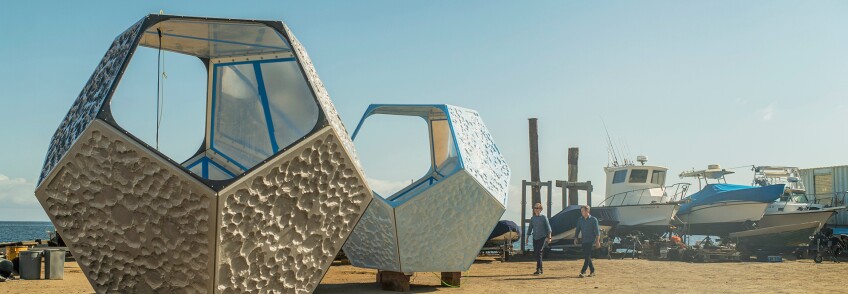
Lost amongst the cacophony of the 2016 presidential campaigns was the news coming out of July’s 13th International Coral Reef Symposium in Honolulu that the coral bleaching event happening worldwide was the longest and vastest on record. The oceans are warming, scientists reported, disrupting the intake of algae by coral, which starves them into a hard white, dead material — they are in a critical state.
That our oceans are both beautiful and in trouble is the current running through Doug Aitken’s new project on Catalina Island, “Underwater Pavilions.” A subsidiary project running concurrent to “Electric Earth,” Aitken’s 20-year survey taking place at the Museum of Contemporary Art, Los Angeles, the interactive installation is comprised of three 12-foot geometric mirrored containers submerged at different depths of the littoral zone of the City of Avalon Dive Park off the Californian Channel Island.
Aitken’s aim, he said in a recent discussion with Parley for the Oceans founder Cyrill Gutsch, was to open up a dialogue between the viewer, the ocean, and whoever the viewer talks to after they encounter “Underwater Pavilions.” Ultimately, he says, it’s to raise awareness of what’s underneath the surface of the ocean. Catalina Island itself has recently dealt with warming oceans and hurricane events linked to climate change that have done damage to its ecosystem.
“It's both about the single individual having a perceptual encounter, an experience, being separated from a world that they're familiar with, but at the same time it's also something that's a moment in time where people can come together and discuss, and talk, and share, and there can be a sense of crossover,” Aitken told Gutsch.
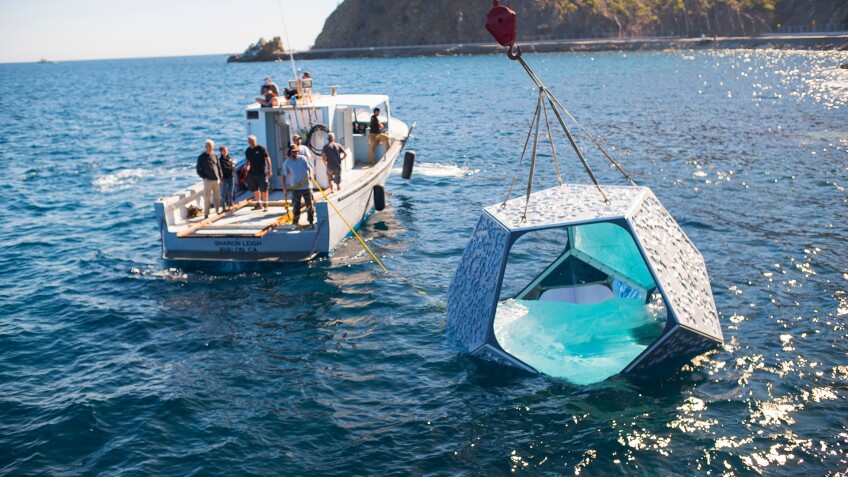
The installation opened to the public on December 4, and is accessible by swimming, snorkeling, or scuba diving to the pavilions. “They're pieces the viewer can swim into, swim through and around, and also exist within the ecosystems, the sea life,” said Aitken. Meaning the pavilions have been developed for mixed use by both human and oceanic creature alike. Already, only several weeks into the project, those that have scuba dived to the lowest rung have reported a burgeoning ecosystem of algae and sea creatures growing on the pavilions.
At the time of the interview, Aitken himself had only experienced the installed pavilions the day prior. The artist poetically recounted his initial impression of the sculptures.
“Yesterday, the diving out to see the pavilion was miraculous for me,” he described. “...It’s really like looking at something that's absolutely alive in every possible way... I found myself swimming inward and inward [toward] this strange shape. As I got closer and my vision came into focus, I could see the ocean floor reflected on it. I would see the sun and the clouds reflected on it. I could see all these things — all these moving patterns underneath this vast sprawling ocean, kind of folding together into one piece. It was like some kind of amazing living origami.”

“Underwater Pavilions” was completed in collaboration with Parley for the Oceans. The environmental organization, which started in 2013, has the like minded goal of raising awareness for the beauty and also the fragility of our oceans. “We are already entering the sixth mass extinction event,” said Gutsch. “We are entering a new chapter where it's not anymore about surviving and harnessing this planet, it's really about being in sync with nature.”
For Gutsch, collaborating with artists like Aitken — as well as Julian Schnabel and Pharrell Williams, whom he worked with on previous projects — is essential to encouraging a new breed of ecologically conscious consumer.
“The artist is, for us, extremely interesting as a driver, as a messenger, as a champion in a way that can push change,” said Gutsch. “The artist is not afraid. The artist is not afraid to face disruption, to face chaos. We are living in a moment in human history where we are facing, on one side, total destruction, but on the other side, it is the most beautiful moment of mankind where we have all the tools, all the knowledge — we are connected. We can do everything that we want. So it's like this crazy situation to be in. It's the most beautiful time to live in, actually. And I feel like the artist is the only one that can navigate through this time.”
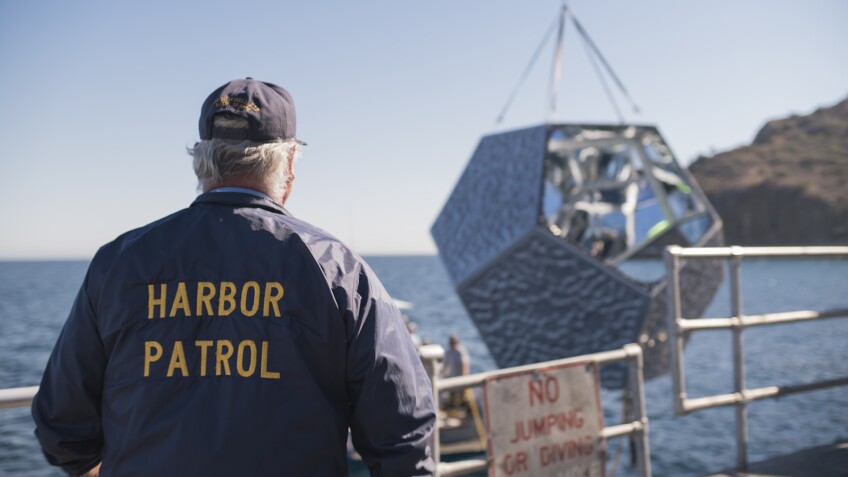
Aitken, Gutsch says, is exactly that strange messenger. As people follow his path out into the ocean, they will see the same phenomena that he experienced in the last 12 months.
Philippe Vergne, the director of MOCA, sees in these experiences Aitken as a storyteller. But this story, Vergne said during a recent visit to Catalina Island, is one of an ineffable quality that recalls the scientific concept of water memory. He explained: “The idea behind it is that every single particle that touched water remains in the water. If you produce an electric reaction of some sort in the water, then all the chemical particles that ever touched this piece of water will reappear. And somehow I see these almost atom-shaped pavilions being part of the sharing of this memory contained in the water. It's [also] the memory of us as a civilization — we came from water somehow, that's a cliché. [Civilization] started around harbors. So there is, around society, [a feeling] of ‘let's study the water,’ ‘let's study the ocean.’ It’s the desire to study an entire part of human memory.”
For Dr. Bill Bushing, a semi-retired marine biologist and underwater photographer who has lived on Catalina Island for 47 years, “Underwater Pavilions” feels a little more local. “I think that the big attraction of this project will be to bring people to Catalina Island who may never have thought of coming here,” said Bushing, who helped Aitken communicate with the California Coastal Commission to understand that the project wouldn’t have a negative impact on the marine environment. “This is an artistic venture, and although we certainly have artists on the island, this is one that's going to get major exposure.”
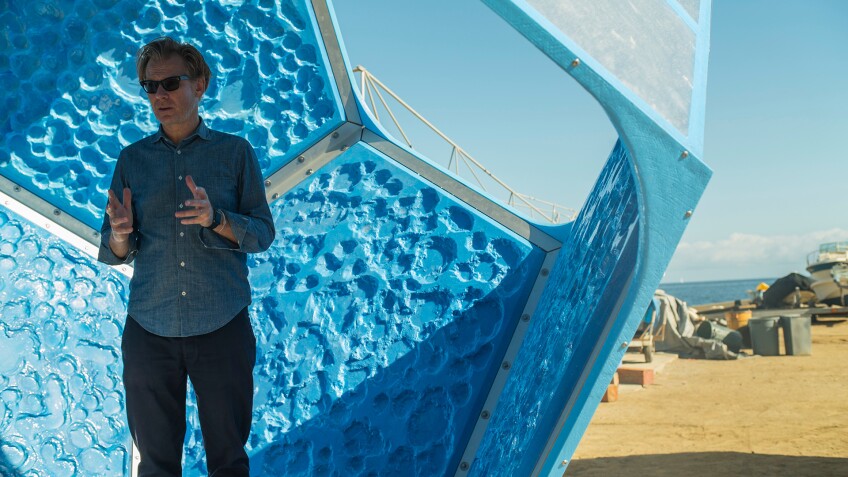
But if making the hour-long ferry ride from mainland Southern California isn’t in the cards, Aitken and Parley have already begun preliminary discussions to move the pavilions to another part of the world at a future date. But those are future plans; for now, Aitken is just enjoying the fact that the ambitious “Underwater Pavilions” has come to life at all.
“It's so exciting to me that it's existing, not within the commercial system — not within the gallery system or the museum system,” he said. “It's not something that's made to be bought or sold. It's not even existing on land. It's as if it rolled off the North American continent and ended up in the water somehow.”
And that experiencing “Underwater Pavilions” involves viewers to swim in the ocean — one of the world’s most precious and fragile resources — makes this a powerful work that’s pushing participants to take a long look at the ocean and how their behaviors affect it. That awareness is the first step to spurring change.
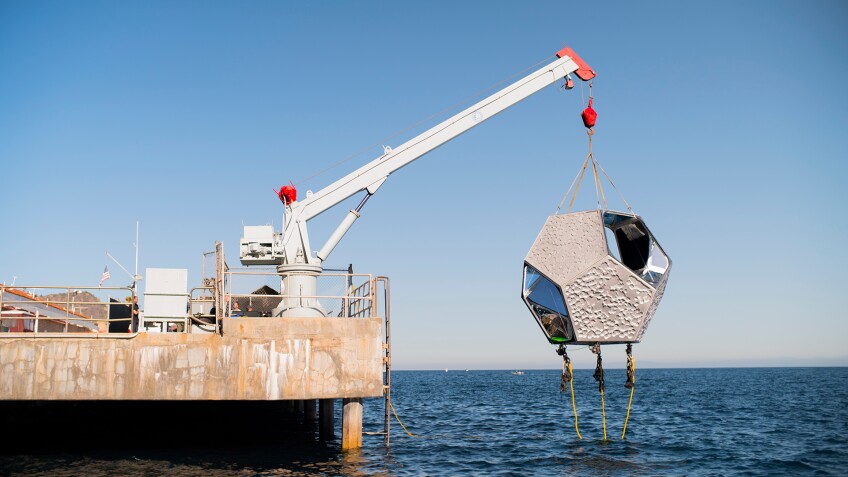
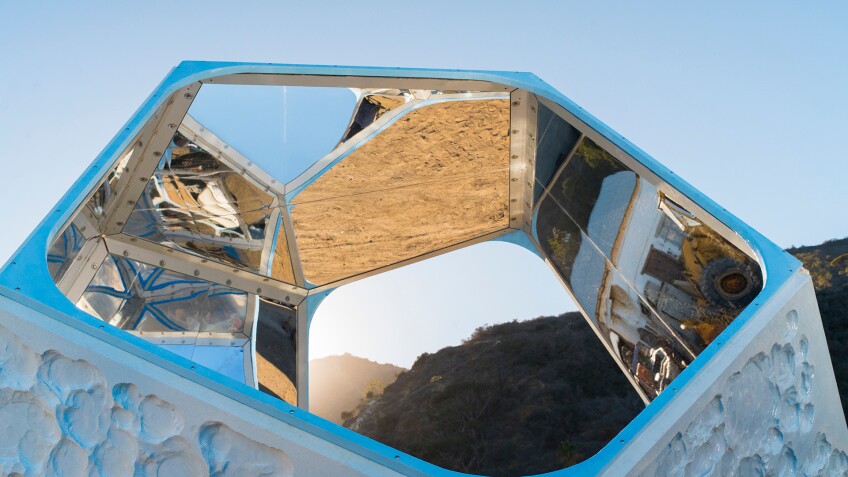
Dig this story? Sign up for our newsletter to get unique arts & culture stories and videos from across Southern California in your inbox. Also, follow Artbound on Facebook, Twitter, and Youtube.

